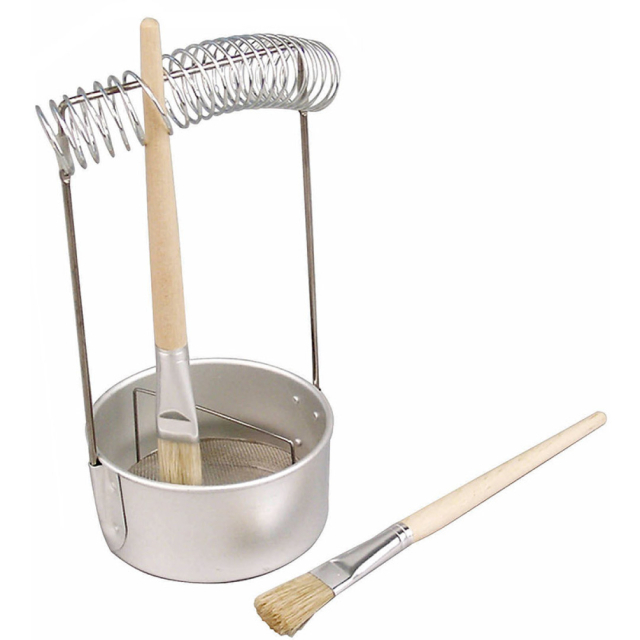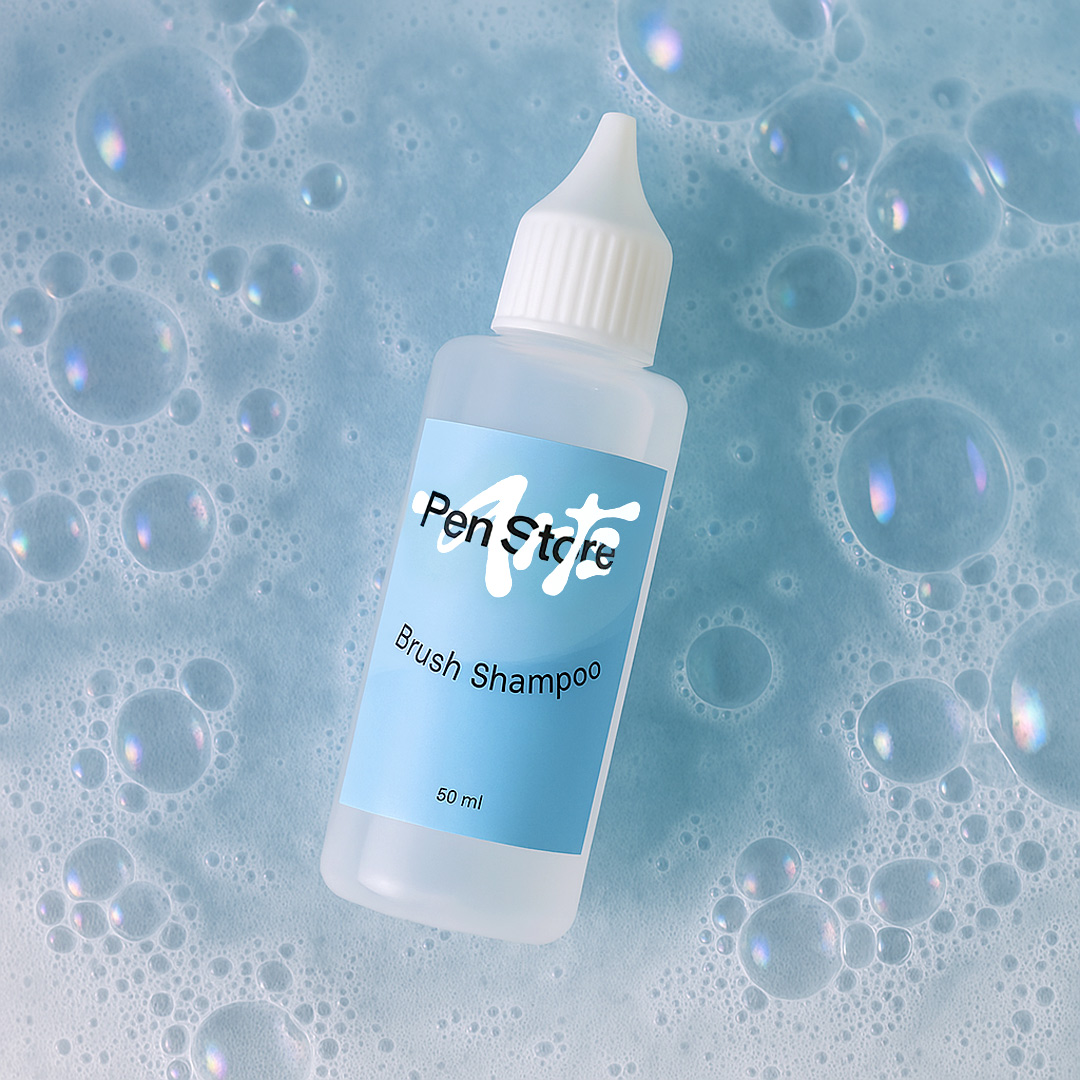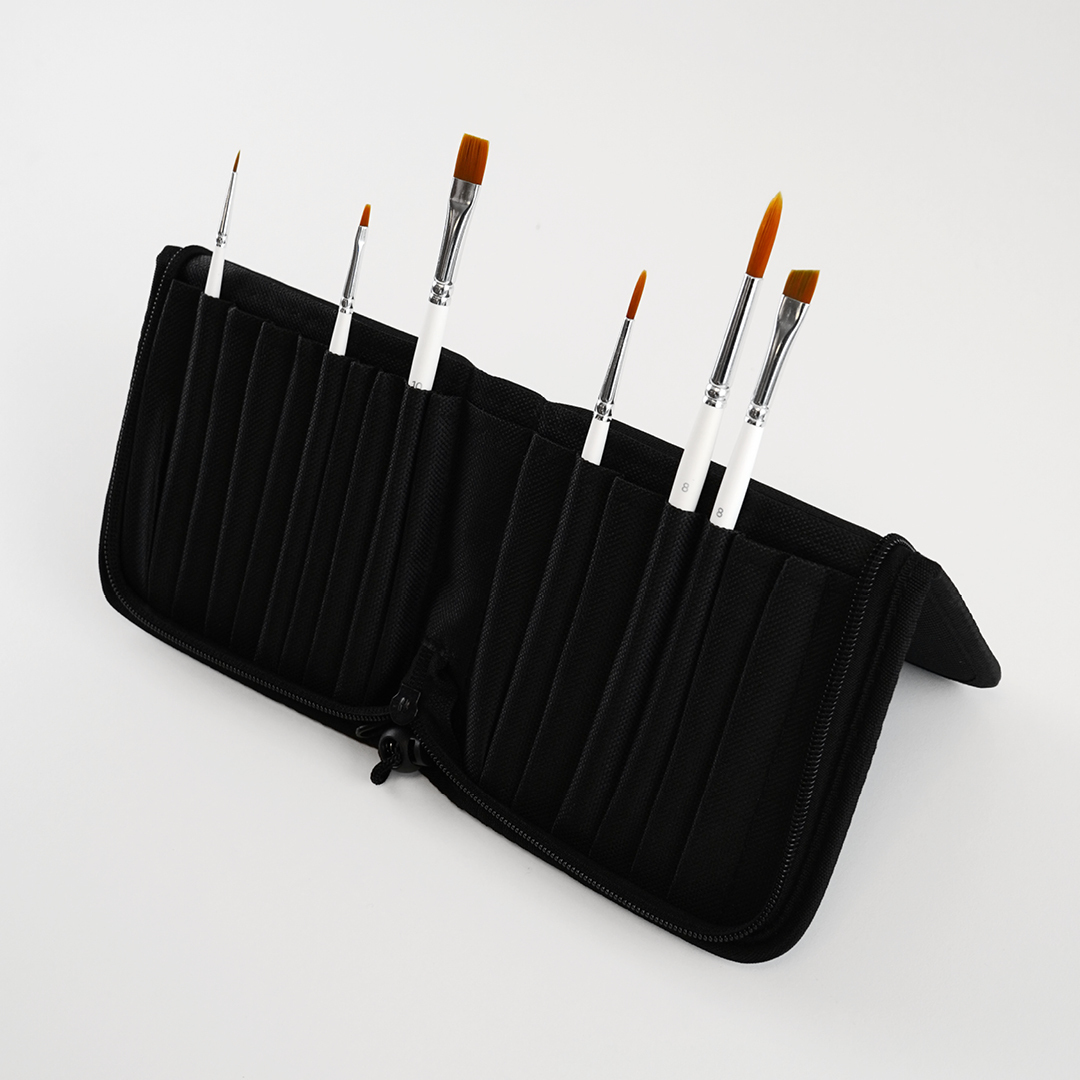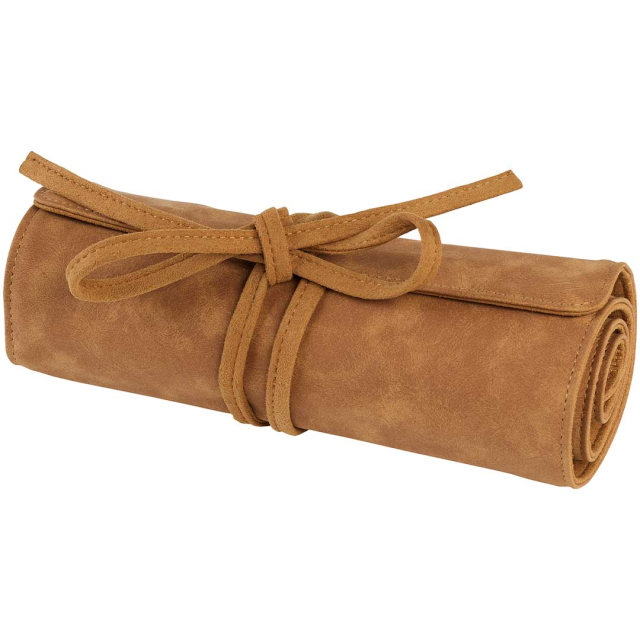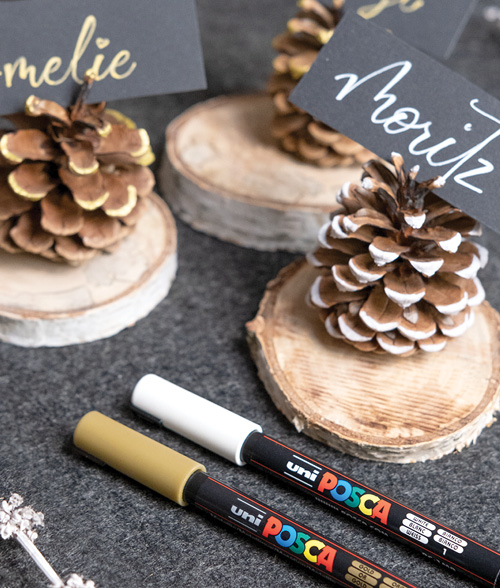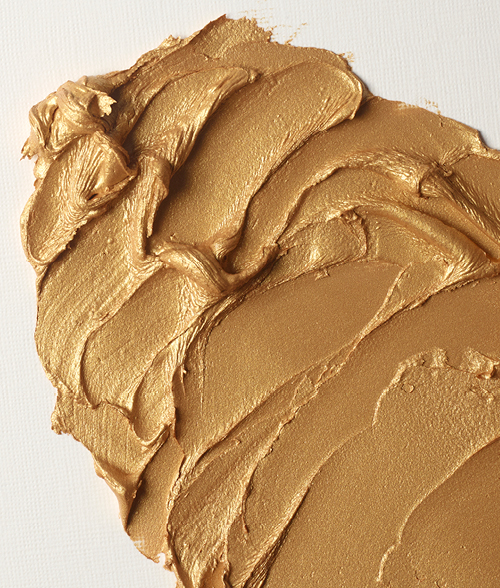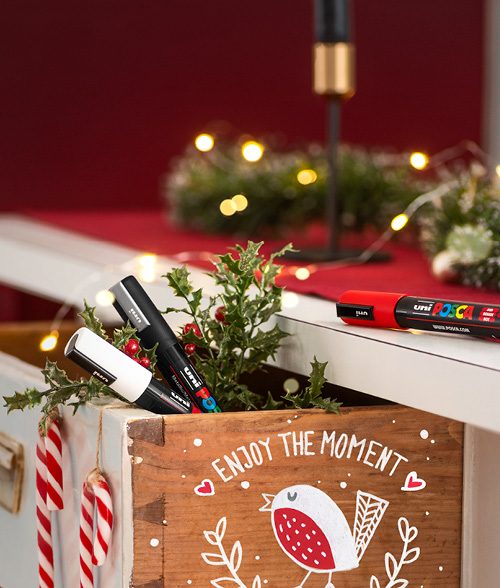With proper cleaning, you can avoid watercolour brushes that splay, shed bristles or lose their shape. Here you’ll find a routine to follow, both for daily washing and for those times when your brush needs a little extra care.
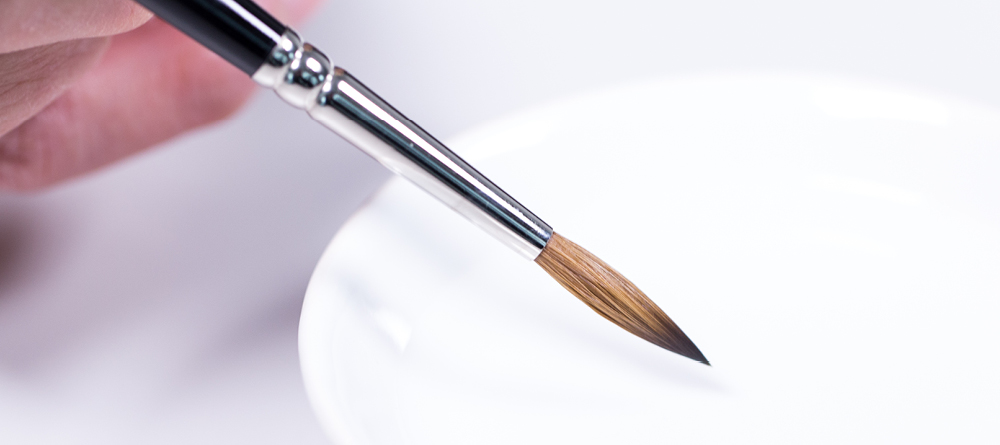
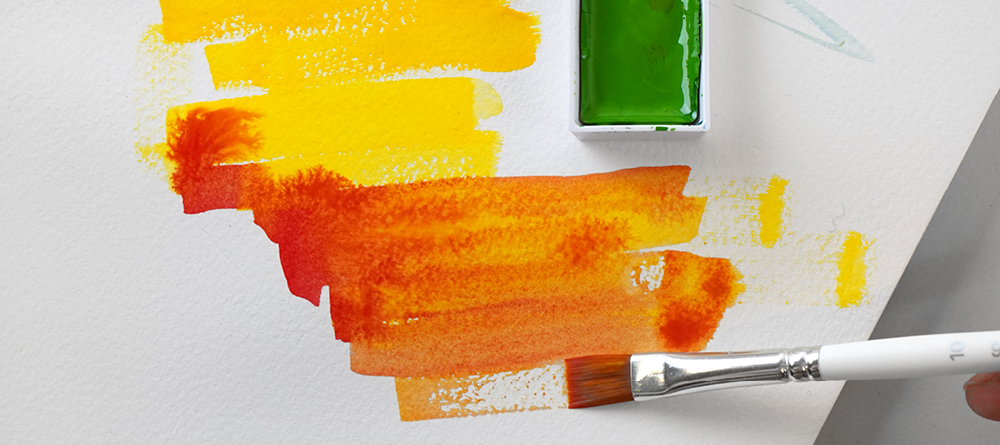
Daily Cleaning: Step by Step
How to wash your brush after each use
The daily cleaning of your brushes has a clear purpose: to remove all paint before the brush is put away to dry. The routine is simple:
- Rinse the brush gently in lukewarm water until the water runs completely clear
- Carefully shape the tip of the brush with your fingers
- Lay the brush horizontally on a piece of kitchen paper or a clean towel to dry
Deep Cleaning: Step by Step
Do this a few times a year
While daily cleaning with water is sufficient for regular maintenance, your brushes will benefit from a deeper clean from time to time. After periods of intensive painting, the brush can lose its spring and shape as paint residue and dust build up at the base. If the brush head feels dry and lifeless, it is time for a thorough clean with brush shampoo or brush soap. Here’s how:
- Rinse the brush thoroughly in lukewarm water
- Gently massage brush soap into the bristles
- Repeat rinsing and washing until the water runs completely clear
- Shape the brush to the desired point by gently drawing it against a towel or using your fingers
Special Treatment for a Worn Brush
To revive a dry and frayed brush, you can give it a simple “hair mask” treatment to nourish and soften it. First, clean the brush thoroughly, then work shampoo into the tip and shape it as desired. Let the brush dry horizontally overnight with the shampoo still in place, and rinse thoroughly before the next use. Brush soap and brush shampoo contain caring ingredients that moisturise and bring new life to dry brushes.
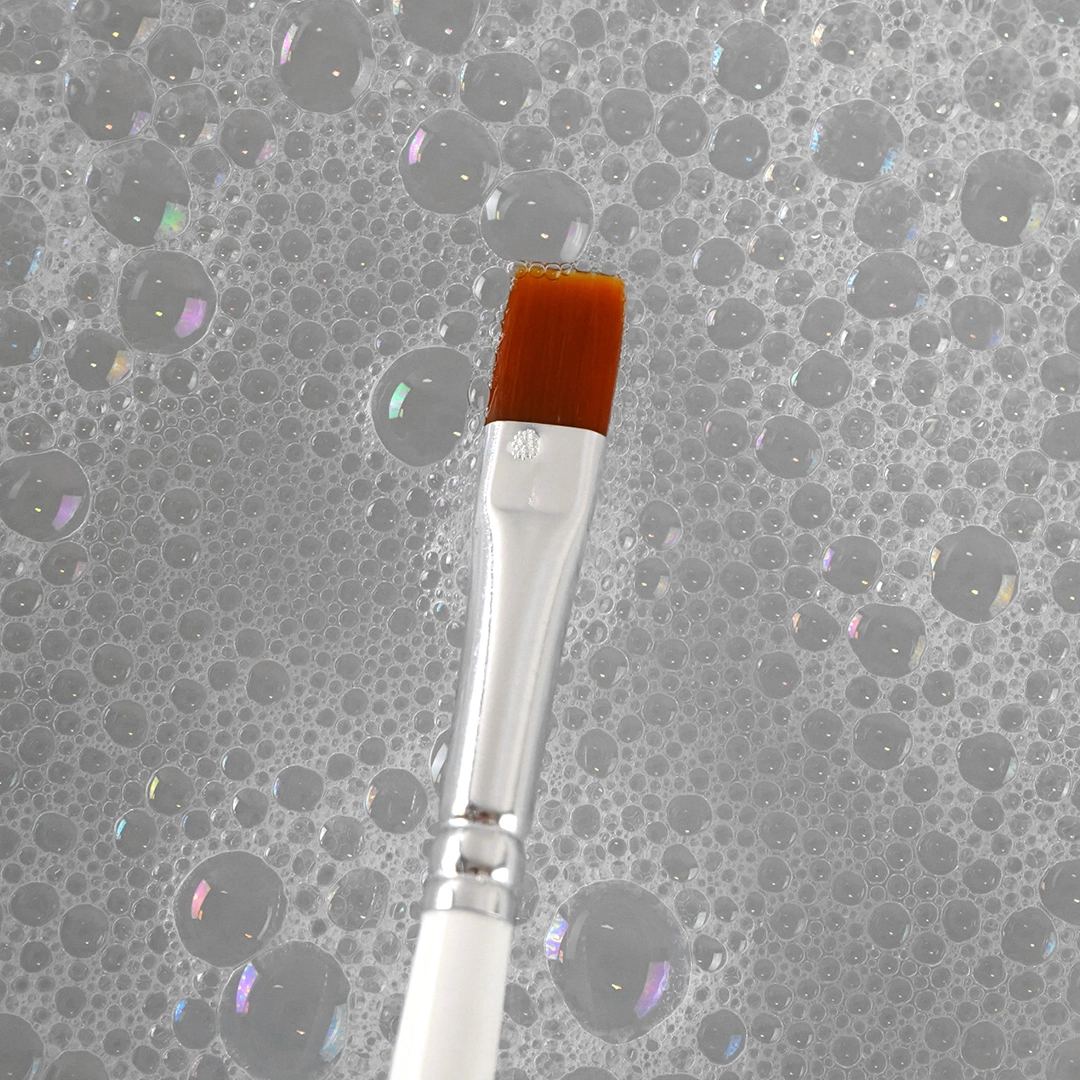
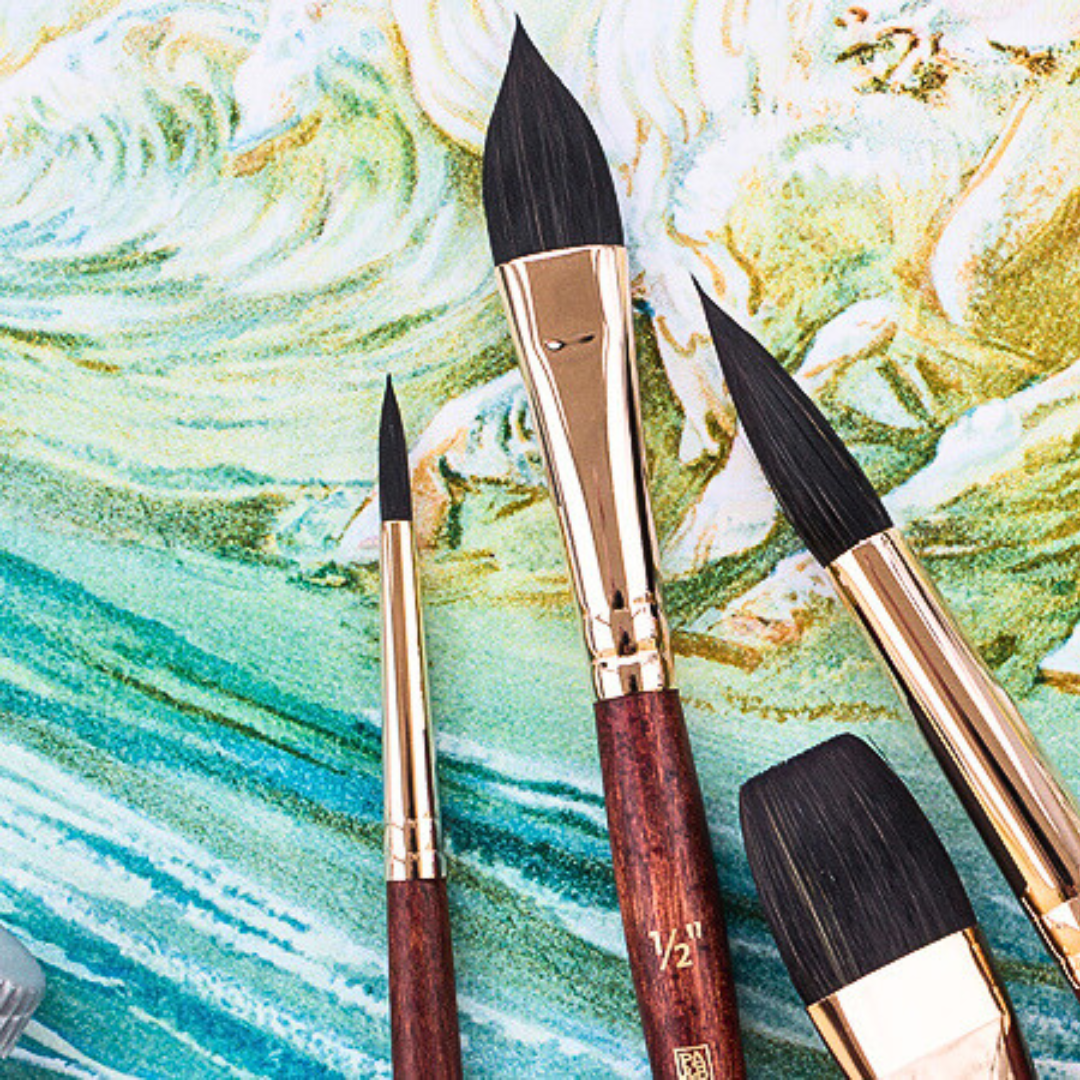
Watch Out: Masking Fluid and Brushes
Masking fluid is a clever tool, but it can also be the very thing that ruins your brush, to the point where no cleaning method will help. Never use your regular watercolour brushes for masking fluid. Once the fluid dries, it becomes rubbery and sticks permanently, causing damage that cannot be repaired. Just a few minutes of drying time is enough to ruin an expensive, high-quality brush.
Protect the Brush During Application
If you absolutely need to use a good brush for masking fluid, there’s a trick: soap the brush before application. The soap creates a protective barrier between the fluid and the bristles. Remember to rinse the brush thoroughly immediately after use, before the masking fluid has a chance to dry.
For more tips and advice, read all about masking fluid for watercolour ⭢
 International (EUR)
International (EUR)

